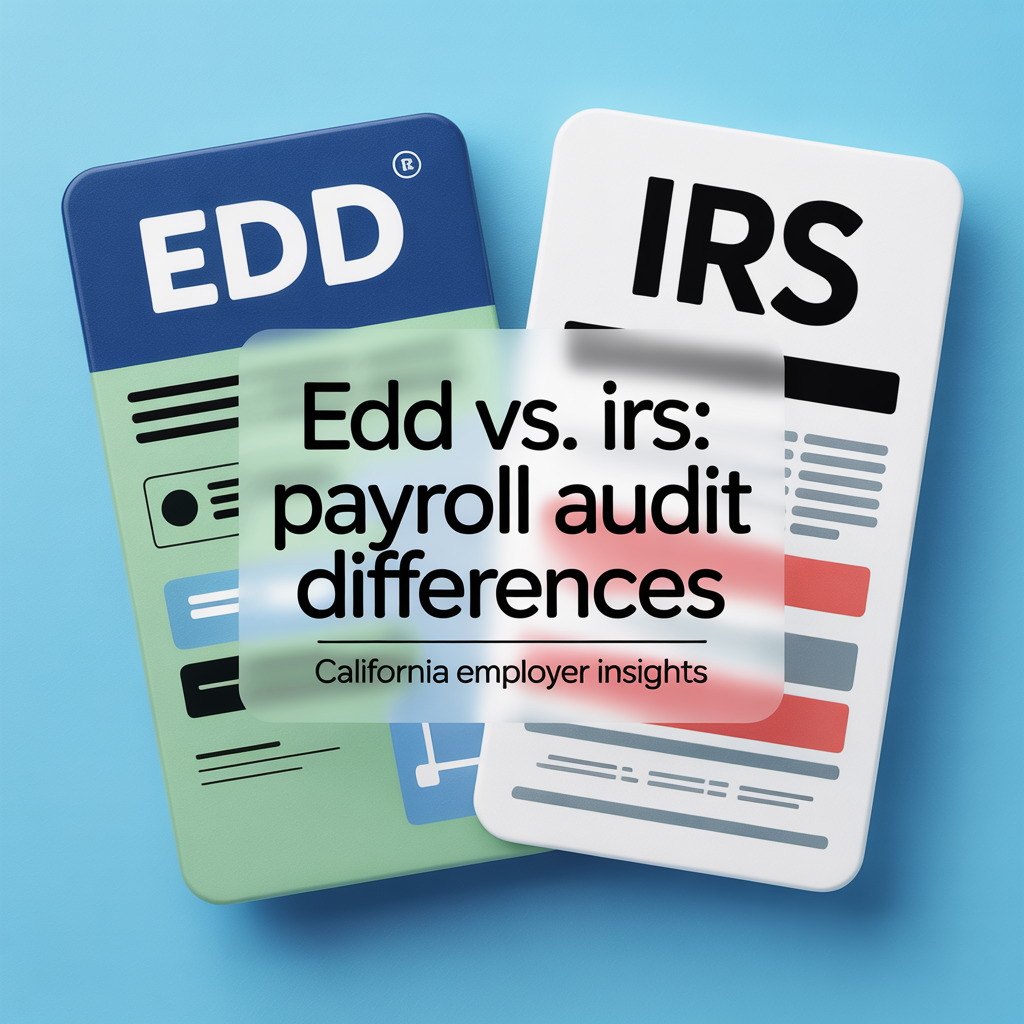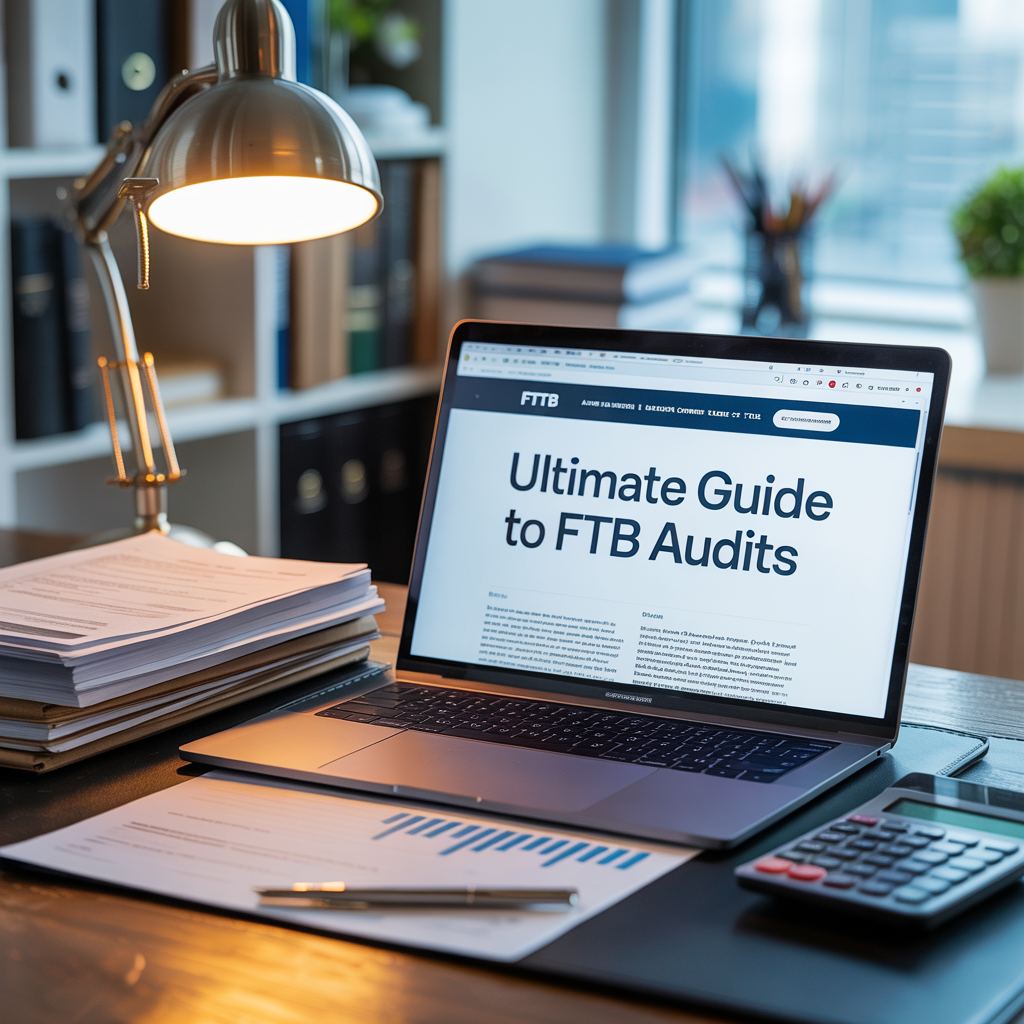California FTB Offer in Compromise vs IRS Offer: What’s the Difference?

Introduction: Not All Tax Settlement Programs Are Created Equal
If you're struggling with tax debt, you've likely heard of the IRS Offer in Compromise (OIC)—a federal program that lets you settle your tax debt for less than you owe. But if you live in California or owe state taxes, you might also be eligible for a Franchise Tax Board (FTB) Offer in Compromise.
If you live in California or owe state taxes, you might be eligible for both. But understand how both IRS and FTB debt can be reduced and that each program has unique qualifications, procedures, and risks.
In this guide, we’ll break down the key differences between the IRS and FTB OIC programs and explain how to get Offer in Compromise help from an Orange County CPA so you can make an informed decision and regain control over your finances.
What is an Offer in Compromise (OIC)?
An Offer in Compromise is a legal agreement that allows taxpayers to settle their tax debt for less than the full amount, based on their inability to pay.
Both the IRS and California FTB offer OIC programs, but each agency:
- Uses different financial criteria
- Has its own forms and process
- Evaluates applications under different legal frameworks
Let’s look at how each program works.
The IRS Offer in Compromise
Eligibility Requirements
To qualify, you must:
- Be up to date with all tax filings
- Not be in active bankruptcy
- Show you can’t afford to pay the full debt, now or in the foreseeable future
The IRS uses a formula based on:
- Your monthly income vs allowable expenses
- The equity in your assets
- Your future earning potential
If your RCP is lower than your tax debt, you may qualify to
settle your IRS tax debt through the OIC program.
Types of IRS OICs
- Doubt as to Collectibility – Most common; based on inability to pay.
- Doubt as to Liability – You don’t believe you owe the tax.
- Effective Tax Administration – Rare; for those who could technically pay but doing so would cause hardship.
Forms and Fees
- Form 656 – Offer application
- Form 433-A (OIC) or 433-B (OIC) – Financial info
- $205 application fee (waived for low-income taxpayers)
- Initial payment required unless you meet hardship qualifications
The FTB Offer in Compromise
Eligibility Requirements
To qualify for a California FTB OIC, you must show that:
- You do not have the ability to pay the full amount now or in the future
- The offer is the most the FTB can reasonably expect to collect
- You are not in bankruptcy
- All required tax returns have been filed
Many taxpayers are surprised to learn they can also
reduce California penalties before submitting an OIC — potentially improving their chances of approval.
Who Qualifies
The FTB OIC is available for:
- Individuals
- Self-employed taxpayers
- Businesses and corporations (using different forms)
Forms and Process
- Form 4905PIT – For individuals
- Form 4905BE – For businesses
- No formal application fee
- No fixed formula like the IRS—but similar principles apply
Key Considerations
- The FTB looks at current and future income, assets, and expenses
- Offers must be paid within a short period (usually 5 years max)
- They may require you to remain compliant for several years after acceptance
FTB vs IRS: Key Differences
| Feature | IRS Offer in Compromise | California FTB Offer in Compromise |
|---|---|---|
| Application Forms | 656 + 433-A/B (OIC) | 4905PIT (individuals), 4905BE (businesses) |
| Application Fee | $205 (unless waived) | None |
| Down Payment Required? | Yes, unless hardship | Sometimes yes |
| Turnaround Time | 6–9 months | 4–9 months |
| Asset Review | Detailed RCP formula | Case-by-case financial review |
| Future Compliance Requirement | 5 years | Typically 5 years |
| Public Information? | Accepted offers published | Some offers are public via FTB reporting |
Can You Apply for Both at the Same Time?
If you owe both IRS and FTB tax debt, you can apply to both agencies—but coordination is critical.
For example:
- The IRS may approve your offer based on your inability to pay, while the FTB may reject it if they think your California real estate has enough equity.
- You’ll need to ensure cash flow doesn’t disqualify you for one while negotiating with the other.
Working with a licensed tax professional can help you strategically sequence your offers and avoid pitfalls.
How Professional Help Can Make a Difference
Both the IRS and FTB OIC programs are highly technical. Many applications are denied simply because:
- They were incomplete
- Financials weren’t well documented
- The offer was unrealistically low
- The taxpayer wasn’t compliant
A licensed California CPA firm like Boulanger CPA and Consulting PC can:
- Review your IRS and FTB debts
- Prepare compliant, evidence-backed offers
- Negotiate directly with state and federal agents
- Help you avoid enforcement actions during review
- Protect your rights and maximize approval chances
They can also help
remove state liens after negotiating settlement, where applicable.
When to Use the IRS vs FTB OIC
Choose the IRS OIC if:
- You owe significantly more to the IRS than to the FTB
- You have minimal income/assets and want broad protection
- You’re already working with the IRS and want to finish that case first
Choose the FTB OIC if:
- You owe more to California
- You’re being garnished or levied by the FTB
- You’ve already settled with the IRS and want to clean up your state debt
Case Example: IRS vs FTB OIC in Real Life
Susan, a self-employed consultant from Orange County, owed:
- $72,000 to the IRS
- $19,000 to the California FTB
After a full financial review, her CPA submitted:
- An IRS Offer in Compromise for $4,800, accepted after 6 months
- A California FTB Offer in Compromise for $2,500, accepted after 5 months
Now she’s debt-free and fully compliant, with both tax agencies.
Final Thoughts: Know Your Options, Choose the Right Path
While both the IRS and FTB offer settlement options, they are not interchangeable. Each has unique processes and criteria—and missteps can delay or derail your chances of relief.
If you’re unsure which path is right for you, or how to approach both agencies, a licensed tax resolution expert can help you navigate the system, file accurately, and avoid costly mistakes.
Work With a Trusted Orange County Tax Resolution CPA
At Boulanger CPA and Consulting PC, we help California taxpayers just like you settle tax debt with both the IRS and the FTB. We provide:
- One-on-one consultations
- Customized settlement strategies
- Virtual or in-person meetings by appointment
Whether you owe $5,000 or $150,000, we can help you explore your options and take the next right step.
Contact Us Today
Website:
www.orangecounty.cpa
Phone:
657-218-5700
Email:
marc@boulangercpa.com
Frequently Asked Questions
What is an Offer in Compromise (OIC)?
An Offer in Compromise allows a taxpayer to settle their tax debt for less than the full amount owed, based on financial hardship or doubt as to collectibility.
Does California have its own Offer in Compromise?
Yes. The FTB and EDD each have their own OIC programs, which are separate from the IRS and have different eligibility criteria and forms.
How is the FTB OIC different from the IRS version?
The FTB has stricter rules and reviews fewer applications. IRS Offers are more widely accepted and processed through a centralized system.
Which program is harder to qualify for?
Generally, the FTB is more selective. They may require proof that all income sources have been exhausted and all expenses are justified in detail.
Can I apply for both at the same time?
Yes, if you owe both IRS and California tax debt. Your CPA must submit separate forms and financials to each agency.
Should I work with a local CPA to submit an OIC?
Yes. A CPA in Orange County understands both IRS and California rules and can help you avoid common mistakes that lead to rejections or delays.
📣 About the Author
Marc Boulanger, CPA is the founder of Boulanger CPA and Consulting PC, a boutique tax resolution firm based in Orange County, California and trusted by high-income individuals and business owners across Southern California.
He is the author of Defend What’s Yours: A California Taxpayer’s Guide to Beating the IRS and FTB at Their Own Game, available now on Amazon. The book offers a step-by-step plan for resolving IRS and FTB tax debt without losing your business, your home, or your peace of mind.
With over a decade of experience resolving high-stakes IRS and State tax matters, Marc brings strategic insight to complex cases involving wage garnishments, bank levies, unfiled returns, and six-figure tax debts. He is known for helping clients reduce or eliminate tax liabilities through expertly negotiated settlements and compliance plans.
Marc is a Certified Public Accountant licensed in California and Oklahoma and holds the designation of Certified Tax Representation Consultant. He is a member of the American Society of Tax Problem Solvers (ASTPS) — the national organization founded by the educators and practitioners who have trained thousands of CPAs, EAs, and tax attorneys in IRS representation strategy.
Every case is handled with discretion, proven methodology, and direct CPA-led representation — not call center scripts.
📍 Learn more at www.orangecounty.cpa or call (657) 218-5700.










